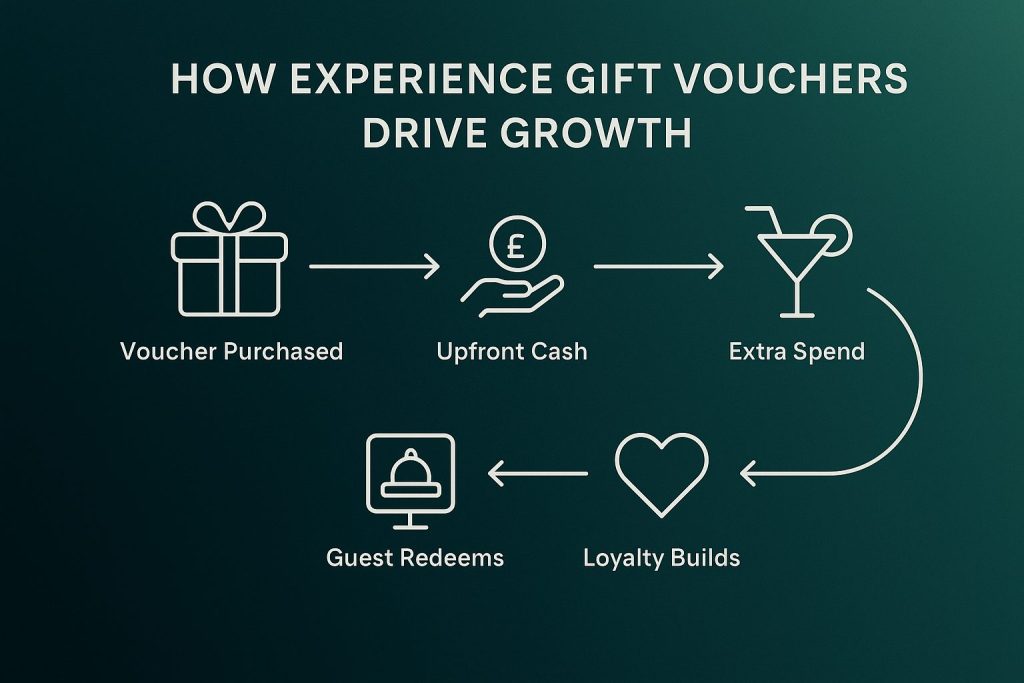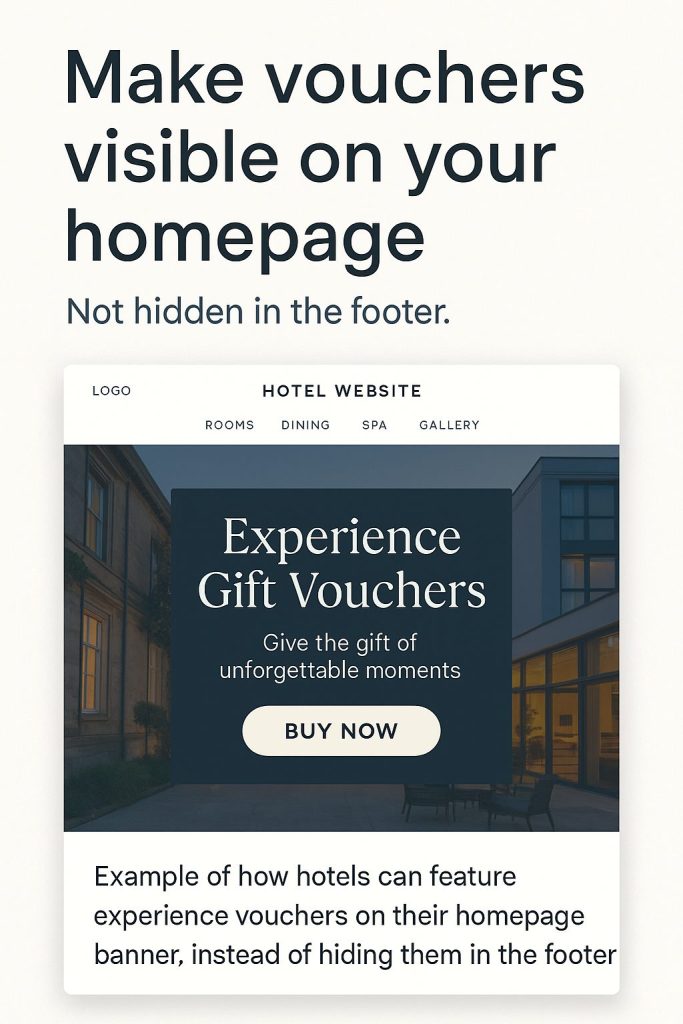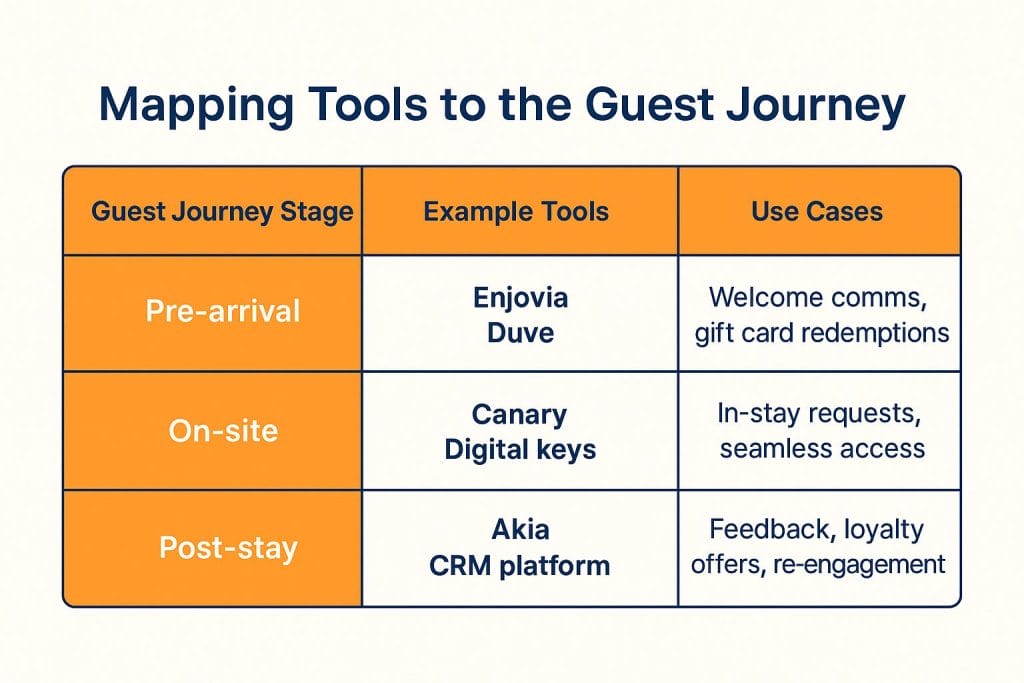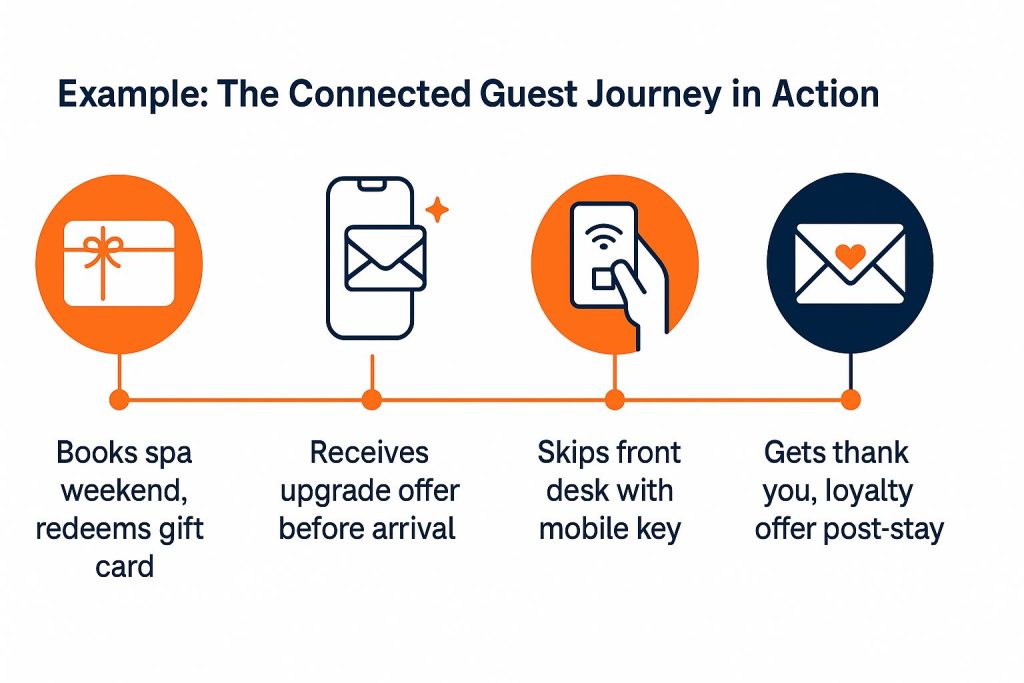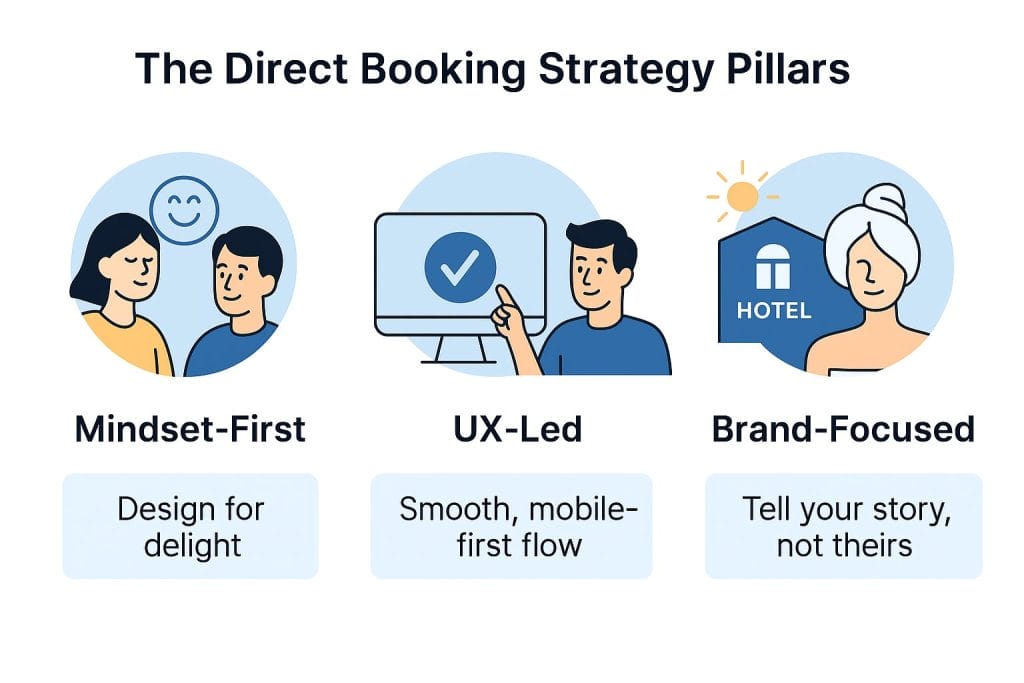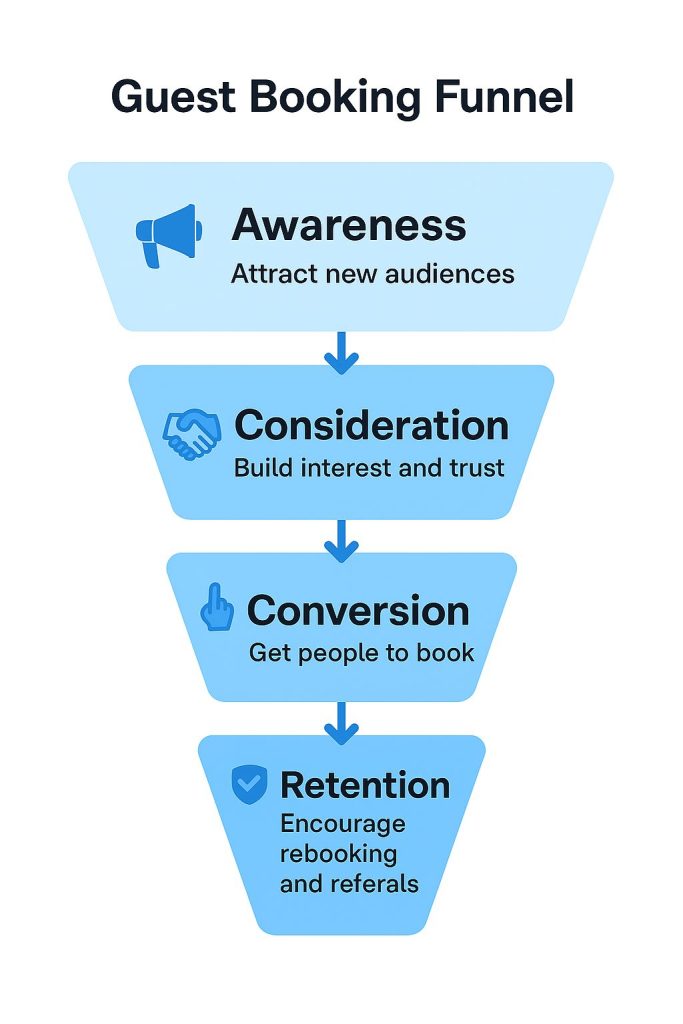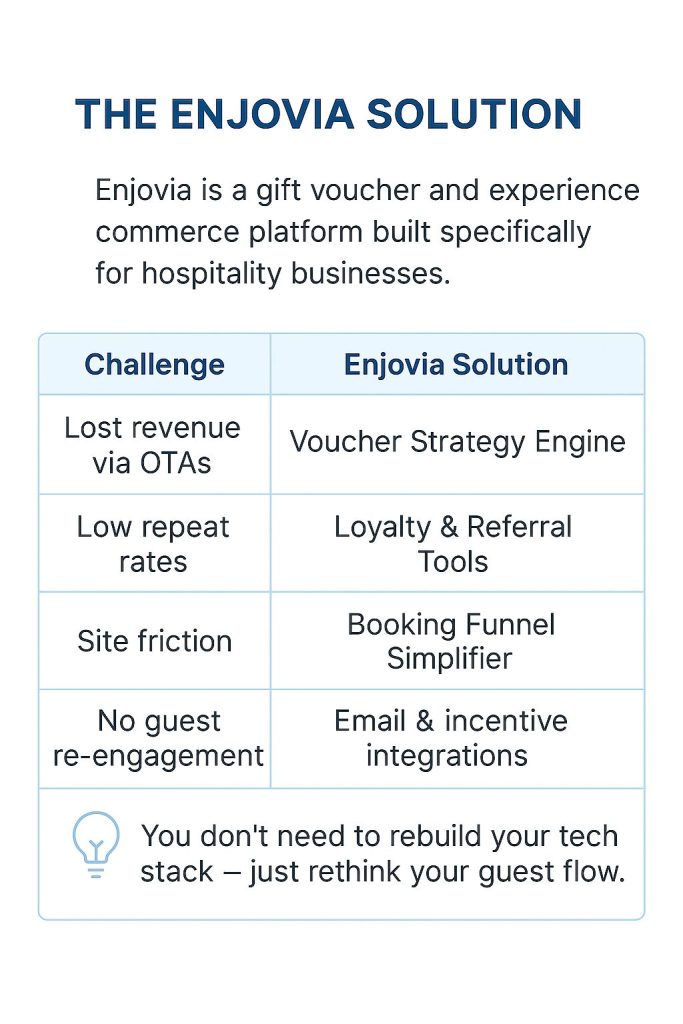Strategies to Increase Hotel Revenue
Quick Answer/ TL;DR
Strategies to Increase Hotel Revenue
When bookings slow but costs stay fixed, smart hotels sell experiences in advance through prepaid vouchers. This brings in cash early, smooths seasonal dips, and protects profit margins without discounts.
The essentials:
- Generate cash sooner with prepaid experience vouchers.
- Protect margins through premium, giftable packages.
- Shape demand using midweek or off-peak redemption rules.
- Drive volume with corporate gifting and reward programs.
Treat vouchers as products, not add-ons, and track performance.
Table of Contents
Hotels using this approach, like Celtic Manor with over £2.5M in voucher revenue, prove that selling experiences early is the smarter growth strategy for 2026.
This post explores why prepaid experiences are redefining hotel revenue strategy, and how forward-looking operators are using vouchers to bring cash in sooner.
Want to put this strategy into practice? See our step-by-step guide: How To Sell Gift Cards
Strategies to Increase Hotel Revenue That Solve the Real Problem
It’s that familiar stretch of the year. January rolls in, midweeks are quiet, and the bookings slow down just as your costs stay fixed. The spa team is waiting, rooms are ready, but the revenue isn’t matching the pace of your outgoings.
There’s a growing shift in how smarter operators are dealing with this. They’re not waiting for last-minute bookings or running another promotion. They’re bringing in revenue earlier by selling their experiences in advance. Not just as gifts, but as part of a wider strategy to take control of cash flow and demand.

According to GCVA and KPMG, gift card and voucher sales jumped by 11% in the second half of 2024.
Let’s take a closer look at how that works, and how you can start building that model into your revenue plan this year.
Generate Cash Sooner with Prepaid Vouchers
Every hotel hits a lull. January is often the toughest, with fewer bookings and quieter weekdays. But your operating costs (payroll, supplies, utilities) carry on as usual, and they don’t come with a quiet season.
This is where prepaid experience vouchers come into play.
Here’s the approach: Package up your most appealing experiences (think spa days, two-course lunches, wellness retreats) and promote them during the gift-giving season. Set the redemption period for your quieter months.
InterContinental Singapore generated over SGD 205,000 by pre-selling event vouchers, many of which were redeemed well after the cash had landed.
HSMAI also backs this thinking. Their research shows that vouhers help hotels smooth out seasonal gaps while still offering flexibility to guests.
Selling experiences in advance doesn’t just protect your bottom line. It changes the shape of your revenue calendar.
Curious how this shift is playing out across markets? Read our guide on UK gift card trends 2025 for insights into behaviour, digital growth, and industry direction
Protect Your Margins Without Relying on Discounts
Discounting gets bookings, but it also eats your margins. Guests may bite on a lower rate, but it often comes at the cost of profitability. Once you train your audience to wait for a deal, it’s hard to move them back to full price.
Giftable experiences offer a smarter path. Instead of lowering your rates, you can raise the perceived value of what you’re offering.
The strategy: Create packages that feel indulgent and gift-worthy, then price them cleanly. Think “Spring Escape for Two” at £250 or “Gourmet Getaway” at £180. The experience looks premium, the name feels elevated, and the pricing is tidy.
Why it works:
Guests see a complete experience, not just a room with breakfast. It feels like a gift and that emotional value makes it easier to buy.
You hold your margins. The guest gets a memorable experience. Everyone wins.
This protects your revenue and improves your brand. A well-named experience shows intention, not just another generic offer.
Balance Bookings with Staff Availability
Most hotels are stretched at the weekend and quiet midweek. That imbalance isn’t just inconvenient - it drains your team and leaves valuable resources underused.
Prepaid vouchers help you guide demand toward the times you can serve it best.
The strategy: Set clear redemption windows when you create your experiences. Use weekday-only availability, blackout dates, or tiered value to shape when guests arrive.
Example:
Offer a spa and lunch voucher that’s only valid midweek. It nudges guests into quieter slots, takes pressure off weekends, and helps you make full use of your team and space.

The result:
Your team runs more smoothly. Guests get consistent service. And you're not chasing bookings at the last minute.
This is where smart experience design becomes an operational tool, not just a marketing one.
Sell More by Targeting Corporate Buyers
Corporate gifting is often overlooked, yet it’s one of the fastest ways to boost voucher sales. HR teams, event planners, and sales leaders are all looking for ways to reward and recognise - your hotel experiences can be the answer.
The strategy: Create ready-to-send packages for business use. Think spa and lunch bundles, client overnight stays, or golf and dine offers. Keep them simple, polished, and easy to buy in volume.
Why it works:
It’s a thoughtful gift with zero admin. You fill quieter slots, bring in high-value guests, and open the door to repeat business.
What Most Hotel Revenue Strategies Miss
A lot of hotel revenue advice hits the same points: boost direct bookings, optimise your OTA listings, adjust your pricing, run a few upsells. All useful, but all reactive.
Most strategies miss one thing: timing. Selling earlier gives you control when demand is low.
That’s where vouchers stand out.
They let you:
- Sell ahead of service
- Match demand to staff capacity
- Capture both buyer and recipient data
- Build brand loyalty without chasing discounts
Most operators treat vouchers as seasonal extras. The ones seeing real growth treat them like product lines, with clear pricing, strong names, and fixed redemption windows.
The Revenue Potential When You Treat Vouchers Like Products
Hotels that treat vouchers as a side revenue stream only yield small results. Those that invest in naming, packaging, and promotion experience real growth.
Celtic Manor now generates over £2.5 million annually from vouchers. The difference was strategy, not scale.
See how Celtic Manor built a £2.5M voucher strategy using clever packaging, redemption controls, and a product-first approach.
Here’s how to bring that same thinking to your own property.

Collaborate with Local Talent
Local partnerships add depth to your offers. You don’t need to do it all in-house.
Ideas to Inspire:
- Celestial stays: Partner with a stargazing guide or observatory for a "Night Under the Stars" escape with telescope access and late checkout.
- Farm to fork weekends: Include a guided market visit, chef’s tasting menu, and wine pairing with a local producer.
- Gallery & stay: Team with a local artist or curator. Offer a private gallery tour, meet-the-artist session, and overnight stay.
They add place-based value that guests remember.
Build Seasonal Campaigns That Feel Fresh
The calendar is full of moments to anchor around. Go beyond Christmas and Valentine’s Day.
Inspiration to steal:
- Spring revival: A 24-hour detox including sunrise yoga, a light seasonal lunch, and spa time.
- Autumn unwind: Forest walks, warm cider, fireside dinner.
- Local event hooks: Create packages linked to food festivals, concerts, or seasonal markets.
With a strong name and a timely hook, these offers sell themselves.
Add Surprise Layers and Tiered Offers
People love an upgrade. Especially if it feels like a bonus.
Tactics to try:
- Surprise and delight: Randomly upgrade some voucher redeemers with a bottle of wine or room upgrade. Small gesture, big impact.
- Tiered pricing: Create Silver, Gold, and Platinum versions of the same core experience. Let buyers self-select their spend.
- Pre-arrival upsells: Offer options to extend spa access, add meals, or include experiences during the voucher redemption flow.
These layers lift both average spend and guest satisfaction without needing more hard selling.
Why It Works
- Guests buy emotionally, not logically. Vouchers sell best when they feel like thoughtful gifts, not transactions.
- Local collabs expand your story, your value, and your audience.
- Strong campaign ideas cut through the noise and help people choose your brand before others.
Whether you’re a boutique rural retreat or a city-centre spa hotel, this model works. The more creative and intentional you are, the bigger the return.
Quick Start: Launch Smarter Vouchers in 30 Days
You don’t need a big team or new tech to start selling experiences. Here’s how to get your voucher programme off the ground in under a month.
Week 1: Package and Price
- Choose three core experiences you already offer (spa day, overnight stay, afternoon tea).
- Give each one a strong, emotional name that sounds like a gift.
- Set simple, round pricing (for example, £95, £150, £250).
- Write a short description that sets the scene.
Week 2: Set Redemption Rules
- Define when each voucher can be used (midweek only, off-peak dates, advance booking required).
- Use these rules to shift redemptions into quiet periods and protect peak time.
- Make redemption terms visible and easy to follow.
Week 3: Promote Where It Matters
- Feature your vouchers on your homepage, not buried in the footer.
- Add banners and links to your booking confirmation emails.
- Train staff to mention vouchers at checkout or when guests ask about gifting.
Week 4: Build a Simple Journey
- Follow the full cycle: Buyer → Recipient → Redeemer → Return Guest.
- Tag buyers in your CRM or email tool so you can re-market later.
- Ask recipients to opt in at redemption so you can build your audience with every gift.
A simple voucher launch can drive fast revenue. From there, build seasonal offers and campaigns that fill calendar gaps.
FAQ: Smart Voucher Strategies for Hotels
Are gift vouchers really profitable for hotels?
Yes. Vouchers bring in cash early and often land during quiet periods. Unused ones still add to your profit.
How do I avoid overbooking from voucher redemptions?
Set blackout dates, midweek-only rules, or caps. Tools like Enjovia help manage this easily.
What types of vouchers sell best?
Gift-style packages sell best. Name them well and keep the pricing simple.
Do digital or physical vouchers work better?
Digital vouchers are faster, trackable, and easier to share. But a beautifully printed option still has a place, especially for in-person or corporate gifting. Offer both if you can.
Can corporate vouchers really drive growth?
Absolutely. Corporate buyers often purchase in volume and come back as private guests. It’s one of the most overlooked growth channels for hotels right now.
Smarter Tools for Smarter Voucher Sales
Enjovia is built for hotels that want more than just gift cards. It gives you everything you need to create, promote, and manage experience-led vouchers - from campaign-ready templates to real-time analytics on what’s working.
You can package offers, control redemption rules, and track performance across seasons, promotions, and guest types. Enjovia gives you dashboards to see which campaigns drive sales, track redemption curves, and refine your offers in real time.
Ready to turn vouchers into a serious revenue stream?
Ready to turn this strategy into action? Read our guide on How to Sell Gift Cards for step-by-step implementation.



